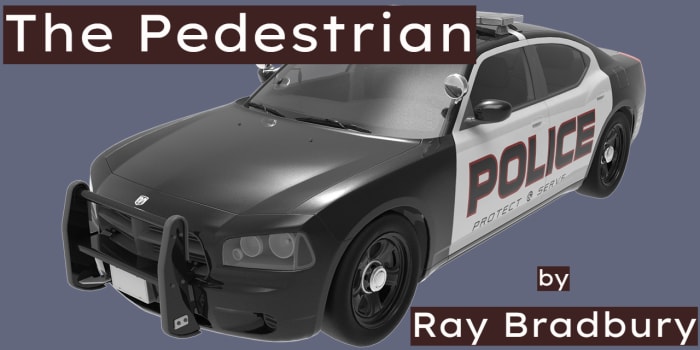

We are told that this is one of only two police cars in the whole city of three million people there had been three police cars until an election the year before, when it had been decided that there was no need for so many as three. A police car stops to ask Leonard who he is and what he does for a living. We learn that it is his habit to do this every night, sometimes staying out until midnight before he returns home.Īs the story progresses, it emerges that this sort of behaviour – staying in all night, every night, and consuming hours of television without ever venturing out – has become not only common, or normalised, but, in effect, the law. He is the only person out on the street at night, because everyone else is indoors, watching their television sets all night. A man named Leonard Mead, who later identifies himself as a writer, is walking the deserted streets of a city. People’s willingness to let technology control them or drive their interactions with others and their willingness to discover themselves.The story takes place on one night in November 2053. Satire What is “The Pedestrian” satirizing? “The Pedestrian” Dystopian Characteristics What type of dystopian society is portrayed? How is the protagonist trapped? What existing social and political systems does the protagonist question? What does the protagonist believe is wrong with the world in which he lives? How does the protagonist help the audience recognize the negative aspects of the dystopian world through his or her perspective? Helps the audience recognize the negative aspects of the dystopian world through his or her perspective.Believes or feels that something is terribly wrong with the society in which he or she lives.Questions the existing social and political systems.Often feels trapped and is struggling to escape.(The Terminator and I, Robot) Philosophical/religious control: Society is controlled by philosophical or religious ideology often enforced through a dictatorship or theocratic government. (Brazil) Technological control: Society is controlled by technology- through computers, robots, and/or scientific means. (Minority Report and The Running Man) Bureaucratic control: Society is controlled by a mindless bureaucracy though a tangle of red tape, relentless regulations, and incompetent government officials. Types of Dystopian Controls Corporate control: One or more large corporations control society though products, advertising and/or the media. The society is an illusion of a perfect utopian world. Citizens conform to uniform expectations. The natural world is banished and distrusted. Citizens have a fear of the outside world. Citizens are under constant surveillance. Information, thought, and freedom are restricted. Propaganda is used to control the citizens. Dystopias make a criticism about a current trend, societal norm, or political system. Dystopia: A futuristic, imagined universe in which oppressive control and the illusion of a perfect society are maintained through strict control. ĭystopia Utopia: A place, state, or condition that is ideally perfect in respect of politics, laws, customs, and conditions. Satire is often used in the context of contemporary politics and other topical and controversial issues. exposes and criticizes stupidity and vices.Satire Satire-writing that ridicules or makes fun of a person or institution with the intent to bring about change. This is the way he wants the reader to see a future in which people have no interests beyond their TVs. The light from their TVs flickers over the viewers’ gray and untouchable faces.īradbury’s setting suggests a mood of death and despair. Mead walks through a landscape in which the houses are compared to dark tombs. Take note of how Bradbury uses setting to express his opinions. This is how Bradbury wants you to see Mead, the man who lives in the house. The words suggest warmth, hope, and solidarity. Note the words Bradbury uses to describe the main character’s house. What mood does this setting create? On a dark, cold night in November 2053, the pedestrian-Leonard Mead-walks alone through the city.Setting can create a mood, or atmosphere-a subtle emotional overtone that can strongly affect our feelings.The time is an evening in the future-November 2053. Setting establishes the time and place of the action in the story.“The Pedestrian” is a chilling portrayal of a society in which people are so isolated in their homes that a lone pedestrian is seen as a threat to the social order. the knack of so arranging the world that we don’t have to experience it. Introducing the Story Literary Focus: Setting and Mood Reading Skills: Writer’s Purpose


 0 kommentar(er)
0 kommentar(er)
